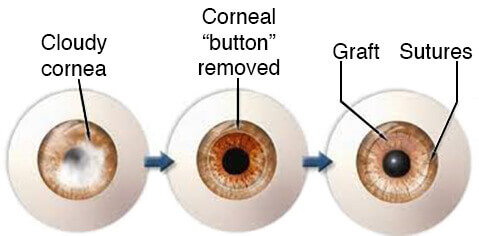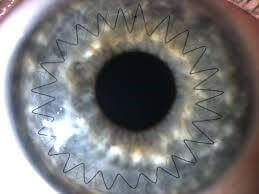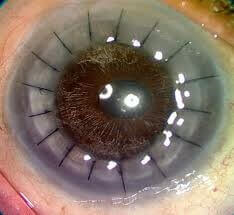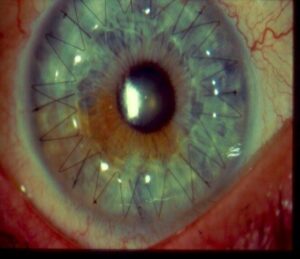
Corneal transplantation, also known as corneal grafting, is a surgical procedure where a damaged or diseased cornea is replaced by donated corneal tissue (the graft) in its entirety (penetrating keratoplasty) or in part (lamellar keratoplasty). The graft is taken from a recently deceased individual with no known diseases or other factors that may affect the viability of the donated tissue or the health of the recipient.
Think of your cornea as a crystal, just like on the front of your watch, it must be transparent to enable clear vision. The depth of the cornea is the thickness of two business cards. There are a few reasons why you might require a cornea transplant, these include:
Corneal transplant is over 90% successful. Since the cornea does not carry any blood vessels the risk of rejection is much lower than other solid organ transplants (kidney, heart, lung,…). Anti-rejection medications is a steroid drop that is taken 1-2 times a day. Some patients can go off the eye drops one year after surgery. However, the rejection risk is always present for the rest of the patient’s life. Rejections are generally treatable if detected early. Symptoms of rejections are blurry vision, redness, and pain.



Descemet’s stripping endothelial keratoplasty (DSEK) has fewer intraoperative and postoperative complications; more rapid visual recovery and a more predictable prescription result following surgery than the traditional corneal transplant.
The traditional surgery, known as full-thickness corneal transplantation or penetrating keratoplasty, uses a round, bladed “cookie cutter” called a trephine to make an incision through all layers of the patient’s cornea, restoring clarity by replacing the central cornea with one from a donor eye. DSEK is used to treat corneal swelling and decreased vision from dysfunction of only the corneal endothelial cells (the inner lining of the front clear part of the eye). Approximately 50 percent of the corneal transplants performed domestically each year are DSEK. Read on if you want more details under DSEK.